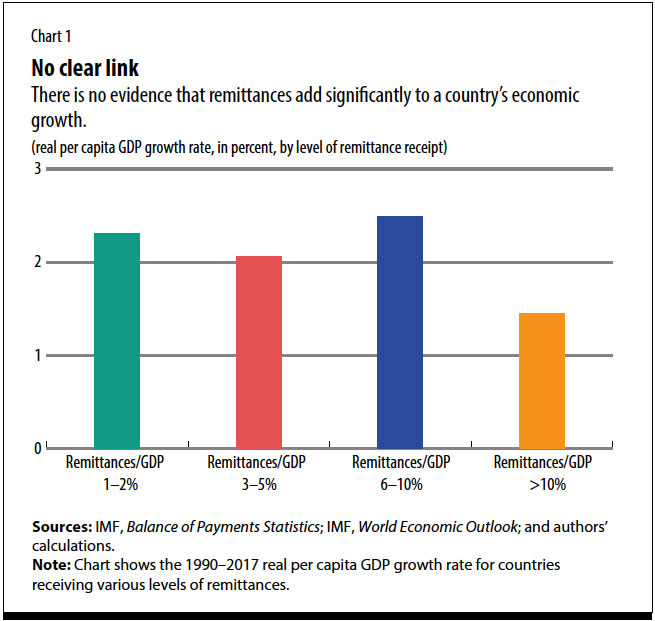Friday, October 19, 2018
Do Remittances Help Growth? A Lebanon Story
From a new post by Timothy Taylor:
“Remittances are money sent back to a home country by emigrants. On a global basis, remittances to developing countries topped $400 billion in 2017, far exceeding foreign aid to those countries, similar in size to flows of loans and equity investment in those countries, and beginning to approach the level of foreign direct investment in those countries.”
These inflows of funds are clearly helpful to the recipient families, helping to boost and to smooth their consumption. But do they help to boost overall economic growth for the recipient country? Ralph Chami, Ekkehard Ernst, Connel Fullenkamp, and Anne Oeking raise doubts in “Is There a Remittance Trap? High levels of remittances can spark a vicious cycle of economic stagnation and dependence,” published in Finance & Development (September 2018, pp. 44-47). This short and readable article draws on insights from their IMF working paper, “Are Remittances Good for Labor Markets in LICs, MICs and Fragile States? Evidence from Cross-Country Data” (May 9, 2018).
The authors point out that at a big picture level, countries that receive more remittances (as a share of GDP) don’t seem to grow faster. They offer the intriguing example of Lebanon”
Continue reading paper here.
Posted by at 10:55 AM
Labels: Inclusive Growth
Subscribe to: Posts
